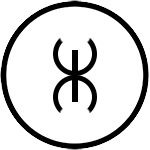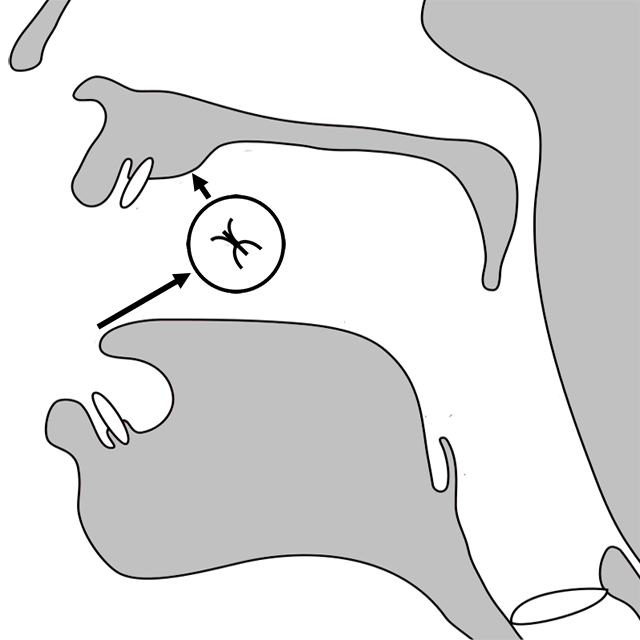
In this lesson you will learn how to make an alveolar stop to create a handclap sound.
A stop is where two parts of the mouth remain in contact for the duration of the sound.
Try humming and make an “m” sound.
Your lips are pressed together. You are making a bilabial (two-lipped) stop!
In iconophonics, stops are shown by the two lines (that represent parts of the mouth anatomy) being connected by a third line.
These are all different kinds of stops.



See how there is a line intersecting the two mouth parts?
The alveolar ridge is the hard bony ridge just above your upper front teeth.
When you say the letter “n” in English, the tip of your tongue is continuously touching your alveolar ridge. When you do this you are making an alveolar stop!

Watch this video and try and make the sound:
Now you have learned all the tools to make the 606 Handclap, one of the most popular sounds used in beatboxing!
The 606 Handclap looks like this:

And it sounds like this:

Now… you might be thinking, “How do I make a Buccal Plosive and an Alveolar Stop at the same time?” In other words, how is it possible to keep the tip of your tongue on the alveolar ridge AND make a plosive between your tongue and your cheek?
The answer is that your cheek extends down the sides of your mouth. So, keeping the tip of your tongue on the alveolar ridge, you use the side of your tongue against your cheek to make the plosive.
Watch the video to learn how to make the sound:
Did you see how the beatboxer made the sound on one side or both sides of his mouth?
Here is the 606 Handclap used in a beat pattern. This beat pattern is called the Ball-Z Break and can be found in the BZZKTT library:

When you are ready, click on the QUIZ button below to take the Stops Quiz:
BZZKTT Version 8.2 • © 2015-2020 Gavin ‘Beatbox’ Tyte (aka TyTe) • All Rights Reserved
BZZKTT is kindly hosted by Alex Tearse from Reefnet.
Special thanks to Alex Tearse, Paul Arnett, Michael Wyatt, Tyler Thompson, Helen Tyte, David ‘Goznet’ Gosnell, and Jerusalem Productions.